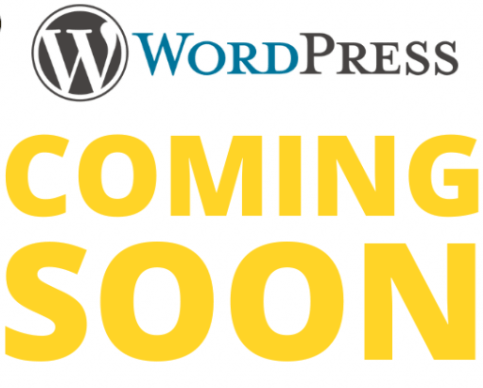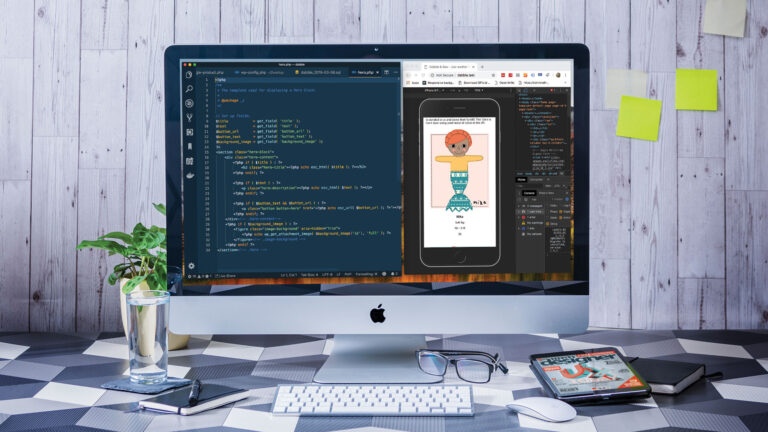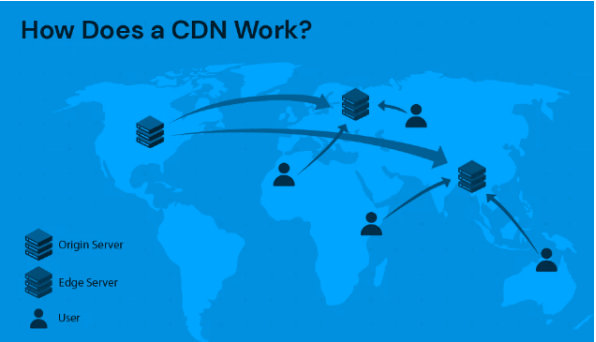Are you a WordPress developer looking to enhance your error handling skills?
This comprehensive guide explores the importance of error handling in PHP, specifically focusing on WordPress.
From understanding PHP errors in WordPress to implementing custom error handlers and utilizing exception handling, this article covers it all.
Learn about fatal errors, the WP_Error class, practical applications, and best practices for integrating error handling in WordPress plugins.
Whether you are a beginner or an experienced developer, this article has something for everyone.
Key Takeaways:
Introduction to PHP Error Handling in WordPress
Introducing PHP Error Handling in WordPress, a crucial aspect of maintaining application stability and user experience.
Effective error handling in WordPress plays a vital role in ensuring the security of the application by preventing sensitive information leakage through error messages. It also enhances user experience by providing clear and helpful error notifications, guiding users on how to resolve issues. A robust error handling strategy contributes to maintaining code quality by promoting structured and organized handling of unexpected situations. Popular PHP error handling mechanisms like WP_Error and custom error handlers allow developers to customize error messages, track errors efficiently, and handle exceptions smoothly.
Understanding the Importance of Error Handling
Understanding the Importance of Error Handling in PHP is crucial for maintaining application security, delivering a seamless user experience, and ensuring high code quality.
Error handling in PHP plays a pivotal role in safeguarding applications against potential security breaches by preventing sensitive information leakage during runtime errors. Properly implemented error handling mechanisms not only enhance the overall user experience by providing clear, understandable error messages but also assist developers in identifying and resolving bugs efficiently. By ensuring robust error handling practices, developers can significantly improve the reliability and stability of their PHP applications, ultimately contributing to a more secure and user-friendly software environment.
Overview of PHP Errors in WordPress
An Overview of PHP Errors in WordPress provides insights into common error types, handling strategies, and tools like Monolog for error logging.
PHP errors in WordPress often include syntax errors, fatal errors, and warnings, impacting website functionality and user experience. By employing effective error handling techniques such as try-catch blocks and error reporting settings, developers can identify and resolve issues promptly. Utilizing specific WordPress functions like WP_Error for managing errors within the WordPress ecosystem ensures compatibility and streamlined error handling. Incorporating advanced logging mechanisms like Monolog facilitates detailed error tracking, aiding in troubleshooting and performance optimization.
Custom Error Handling in WordPress
Implementing Custom Error Handling in WordPress allows developers to tailor error management solutions specific to their application’s requirements.
By having the ability to create custom error handling solutions, developers can ensure a more robust and user-friendly experience for their users. This approach enables them to handle errors more effectively within core functionalities and plugins, maintaining seamless functionality and enhanced user experience.
- Integrating PHP error handling mechanisms through custom error handlers and WP_Fatal_Error_Handler give the power tos developers to identify and resolve issues efficiently. This tailored approach allows for customization based on the specific needs of the application, resulting in more targeted and effective error management.
Benefits of Custom Error Handlers
Discover the Benefits of Custom Error Handlers in WordPress, give the power toing developers to customize error management workflows and enhance application reliability.
Custom error handlers in WordPress play a crucial role in enhancing the development experience by allowing developers to tailor error management processes based on their specific needs. By implementing custom error handlers, developers can improve the *traceability* of errors, making it easier to pinpoint their root causes and resolve them efficiently.
- These custom error handlers significantly boost debugging efficiency by providing detailed notifications and logs that aid in identifying and addressing errors swiftly. They enable developers to create personalized error handling mechanisms, offering greater control over error responses and behaviors.
- The utilization of PHP error handling entities like WP_Error and WP_Fatal_Error_Handler can further strengthen the error management capabilities of custom handlers. Integrating these native WordPress features can ensure seamless error detection, reporting, and resolution, thereby enhancing the overall *application stability*.
Implementing Custom Error Handlers
Learn how to Implement Custom Error Handlers in WordPress to streamline error management processes and optimize application performance.
- Configure a custom error handler in WordPress by accessing the theme’s functions.php file.
- Utilize PHP’s set_error_handler() function to define your custom error handling function.
- Implement error handling strategies such as logging errors to a file or database for better debugging.
- Use PHP’s error_reporting() function to control which errors are displayed and logged.
- Follow best practices by providing informative error messages that help users understand the issue.
- Test your custom error handler thoroughly to ensure it works as expected across different scenarios.
Utilizing Exception Handling in WordPress
Utilizing Exception Handling in WordPress enables developers to gracefully manage unexpected errors and exceptions during application execution.
This is crucial in ensuring a smooth user experience and maintaining the security of the WordPress site. By using try-catch blocks, developers can isolate code that may throw exceptions, allowing specific error handling for different scenarios. The try block contains the code being monitored for exceptions, while the catch block catches and handles any exceptions that occur within the try block effectively.
Integrating PHP’s built-in Exception class and WordPress-specific WP_Error class further enriches the error-handling capabilities. Exception classes can be customized to provide detailed information about errors, aiding developers in debugging and improving code efficiency.
Introduction to Exceptions
Get introduced to Exceptions in WordPress, a mechanism for handling runtime errors and exceptional conditions with precision.
Exceptions in WordPress play a crucial role in managing unexpected errors that occur during script execution. By using exception handling, developers can create more robust and fault-tolerant applications that are capable of gracefully dealing with unforeseen situations.
When an exception is thrown in WordPress, it disrupts the normal flow of the program and allows developers to address the issue, log relevant information, and prevent the application from crashing. This is particularly important in PHP, the language on which WordPress is built, as it provides various built-in classes and functions for handling exceptions.
Using Try-Catch Blocks in WordPress
Leverage Try-Catch Blocks in WordPress to effectively manage exceptions and errors, ensuring robust error handling mechanisms.
When a developer uses a try-catch block in WordPress, they have the opportunity to capture specific errors that may arise during the execution of their code. For instance, if there is a critical database connection error while a user is submitting a form on a WordPress site, the developer can enclose the code responsible for handling the form submission within a try block. When an error occurs, such as the database being unreachable, the catch block will kick in and execute a specific set of instructions to gracefully handle the error and prevent a complete application failure.
Handling Fatal Errors in WordPress
Understanding and Handling Fatal Errors in WordPress is essential for preventing application crashes and maintaining data integrity.
WordPress being a widely used platform, encountering fatal errors can disrupt website functionality and even potentially lead to data loss. By implementing proactive measures such as regular backups, using reliable plugins and themes, and keeping the core WordPress files updated, users can significantly reduce the likelihood of fatal errors occurring.
If there is a fatal error, knowing how to troubleshoot and debug the issue is crucial. Utilizing WordPress’s built-in debug mode and error logs can provide valuable insights into the root cause of the problem, helping users identify and rectify the issue efficiently.
Understanding Fatal Errors
Gain a comprehensive Understanding of Fatal Errors in WordPress, critical issues that can disrupt application functionality and user experience.
WordPress fatal errors are severe issues that can bring down your website, rendering it inaccessible to visitors. These errors can arise from various sources like incompatible plugins, theme conflicts, or even server issues. When a fatal error occurs, it halts the execution of your website and displays an error message, often revealing sensitive information to users. This impacts the stability of your application, leading to a negative user experience and potentially compromising data integrity.
Proper PHP error handling mechanisms are essential to detect and manage fatal errors efficiently. By implementing robust error handling practices like try-catch blocks, error logging, and graceful error messages, developers can preemptively address potential errors and maintain application stability. Resolving fatal errors promptly is crucial to ensure smooth website operation and user satisfaction.
Strategies for Dealing with Fatal Errors
Explore Effective Strategies for Dealing with Fatal Errors in WordPress, ensuring timely error detection, recovery modes, and application resilience.
When faced with fatal errors in WordPress, it is crucial to have a systematic approach in place to minimize downtime and maintain user experience. One of the primary steps is to integrate robust error detection mechanisms that can swiftly pinpoint the root cause of the issue.
- Utilizing tools like debugging plugins or monitoring services can aid in identifying errors promptly.
- Analyzing error logs and PHP error messages can provide valuable insights into the nature of the problem, facilitating quicker resolution.
Implementing graceful error recovery strategies is essential to ensure that the application can recover from errors without significant disruptions. This involves setting up fallback mechanisms, such as displaying friendly error messages or redirecting users to alternative pages.
Working with the WP_Error Class
Working with the WP_Error Class in WordPress provides a structured approach to managing and presenting errors within applications.
This class encapsulates error handling in an organized manner, offering various properties and methods to deal with error messages effectively. The WP_Error object allows developers to store multiple error codes and messages, making it easier to track and handle different types of errors. The class provides methods like add(), get_error_message(), and has_errors(), enabling users to add new errors, retrieve error messages, and check if any errors exist. By utilizing this class, developers can enhance the error-handling mechanism of their WordPress-based projects, ensuring a smoother user experience.
Overview of the WP_Error Class
An Overview of the WP_Error Class in WordPress showcases its role in structured error representation and management for enhanced application robustness.
The WP_Error class serves as a fundamental feature in WordPress for effectively dealing with errors that may occur during script execution. By providing a standardized way to handle errors, this class ensures that error messages are clear, informative, and properly communicated to the developer or user. In essence, WP_Error facilitates structured error management by allowing developers to easily create, handle, and display errors within their code.
Properties and Methods of WP_Error
Explore the Properties and Methods of the WP_Error class in WordPress, essential components for effective error handling and user feedback.
The WP_Error class in WordPress is a fundamental entity for managing errors within PHP code. It provides developers with a structured way to handle and communicate errors to users, ensuring a smoother user experience. Key properties of the WP_Error class include:
- errors: an array to store error messages for different error codes
- error_data: allows additional data to be stored along with error messages for more context
Methods like add() and get_error_message() enable developers to add new errors and retrieve specific error messages efficiently. By utilizing these properties and methods, developers can enhance error reporting and improve user satisfaction.
Practical Applications of WP_Error in WordPress
Implementing Practical Applications of WP_Error in WordPress enhances error reporting, data validation, and user interaction within applications.
Developers often utilize WP_Error to provide structured error messages when dealing with form submissions, database interactions, or external API requests. By incorporating the WP_Error object, developers can effortlessly manage potential errors during data validation processes, offering users transparent feedback on why their input may not meet the required criteria. WP_Error enables developers to streamline error resolution by categorizing and organizing error codes based on importance or severity, allowing for efficient troubleshooting and problem-solving within the application.
Adding and Retrieving Data from WP_Error Objects
Learn the process of Adding and Retrieving Data from WP_Error Objects in WordPress to enhance error context and diagnostic capabilities.
When working with WP_Error objects in WordPress, it’s essential to understand the methods for adding and retrieving data within these objects. To add data to a WP_Error object, you can use the add() method, providing both an error code and message that you want to include. On the other hand, retrieving data from a WP_Error object can be done using the get_error_code() and get_error_message() methods. These functions allow you to access specific error details stored within the object.
Integrating Error Handling in WordPress Plugins
Integrating Error Handling in WordPress Plugins is essential for ensuring plugin stability, data integrity, and positive user experiences.
Implementing proper error handling mechanisms in WordPress plugins plays a crucial role in enhancing the overall reliability and performance of the plugins. By properly managing errors, developers can prevent unexpected crashes, data losses, and security vulnerabilities that could potentially harm user trust and satisfaction.
One of the best practices for effective error handling is to use structured PHP error functions such as try, catch, throw statements. These constructs allow developers to catch and handle errors gracefully, providing users with meaningful error messages without disrupting the plugin’s functionality.
Best Practices for Error Handling in Plugins
Explore Best Practices for Error Handling in WordPress Plugins, optimizing error management workflows and enhancing plugin reliability.
Regarding error detection, implementing conditional statements and error tracking functions can play a crucial role in identifying issues within a WordPress plugin. Utilizing try-catch blocks can help in isolating potential errors and handling them efficiently without crashing the entire system.
Logging mechanisms are essential for recording errors, providing developers with valuable insights to troubleshoot and debug effectively. By logging errors to a dedicated file or database table, developers can analyze patterns and trends, making it easier to address recurring issues proactively.
Crafting user-friendly error messages is paramount in ensuring a positive user experience. Including detailed explanations, relevant error codes, and guidance on resolving the issue can help users navigate through errors seamlessly. It is also advisable to incorporate proper error handling functions from PHP itself, such as ‘error_reporting’ and ‘error_log’, to streamline error management and maintain plugin stability and performance.
Common Errors in Plugin Development
Identifying and Addressing Common Errors in WordPress Plugin Development ensures smoother deployment and improved user satisfaction.
One common mistake is inadequate validation of user input, which can lead to security vulnerabilities and unexpected behavior. It is essential to use built-in WordPress functions like sanitize_text_field() to sanitize and validate data before processing it.
Neglecting proper error handling mechanisms often results in hard-to-trace bugs. Integrating try-catch blocks and utilizing PHP error functions such as error_reporting(E_ALL) and ini_set(‘display_errors’, 1) can streamline the debugging process.
Frequently Asked Questions
What is PHP Error Handling and Exception in WordPress?
PHP Error Handling and Exception in WordPress refers to the process of identifying, reporting, and handling errors and exceptions that occur in a WordPress site built with PHP. This includes handling both syntax errors and runtime errors that may occur during the execution of PHP code.
Why is PHP Error Handling and Exception important in WordPress development?
PHP Error Handling and Exception is important in WordPress development because it helps developers identify and fix errors and exceptions that may occur in their code. This ensures that their WordPress site runs smoothly and without any major issues.
How does WordPress handle PHP errors and exceptions?
WordPress uses its own error handling and exception system, which is based on the PHP Error Reporting function. This system allows developers to set the level of error reporting they want for their site, making it easier to identify and fix errors.
Can I customize the error handling and exception system in WordPress?
Yes, WordPress allows developers to customize the error handling and exception system by setting the error reporting level, defining their own error handling functions, and using the Try-Catch block to handle exceptions.
What is the difference between a PHP error and exception in WordPress?
A PHP error is a problem that occurs during the execution of a PHP script in WordPress, while an exception is an unexpected event or error that disrupts the normal flow of the program. Exceptions are usually more severe and can cause the program to stop running.
How can I troubleshoot and fix PHP errors and exceptions in WordPress?
To troubleshoot and fix PHP errors and exceptions in WordPress, you can use a debugging tool, such as the built-in WordPress debug mode or a third-party plugin, to help identify the source of the error. You can also check for syntax errors in your code and use the error handling and exception system to handle any runtime errors.





